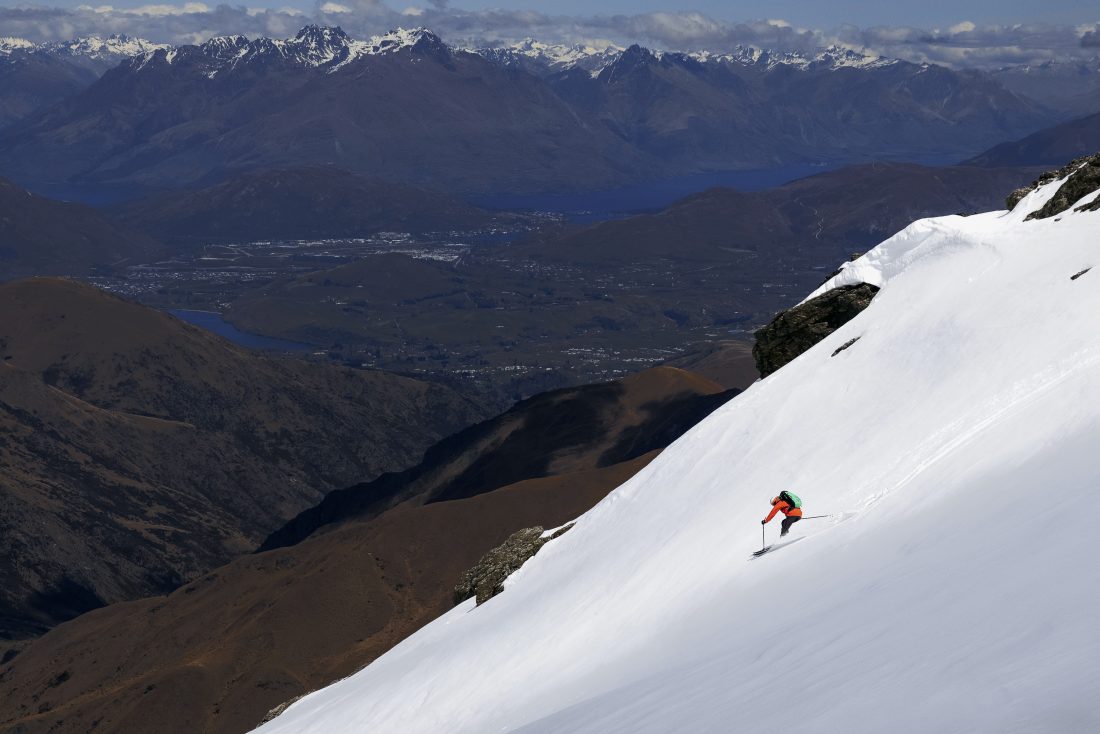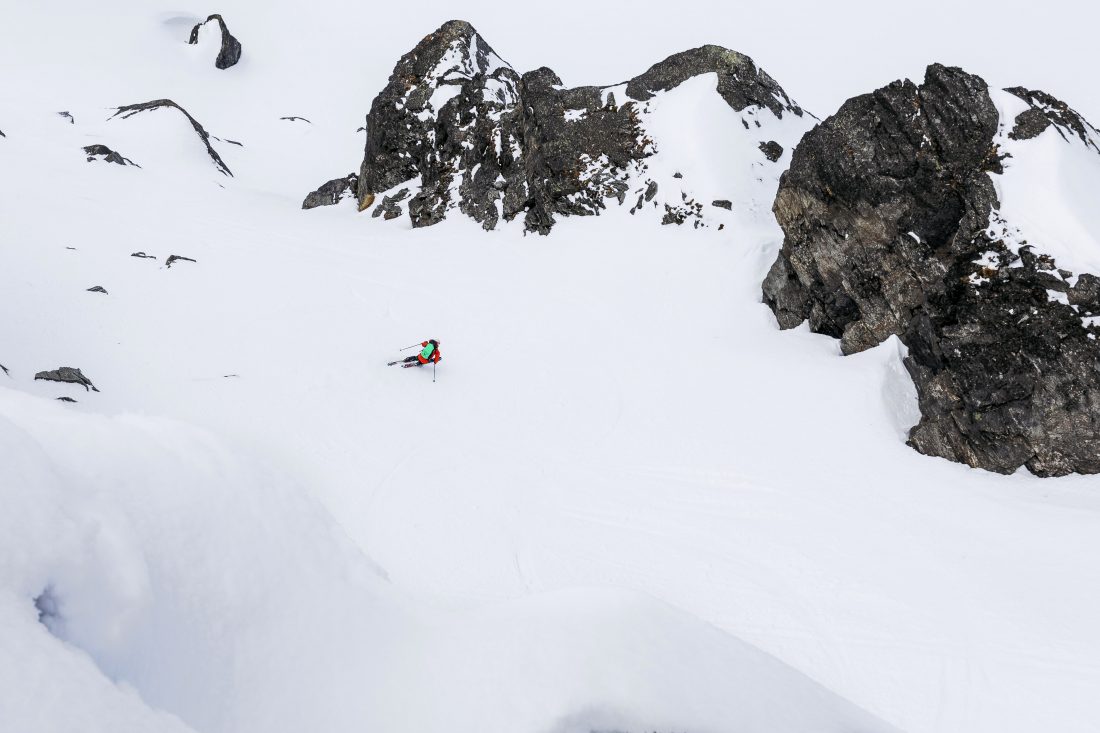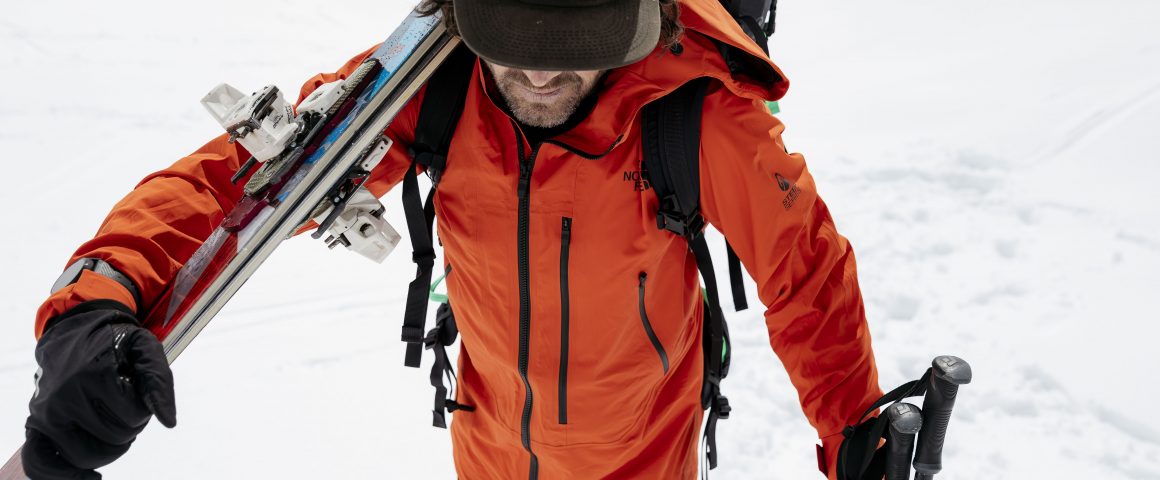OK, it’s not too often a gear review starts with a language lesson, but then again, this is no ordinary gear. So let’s get to it; todays lesson is about synecdoche (si-nek-duh-kee), the grammatical term when a single word represents a greater whole. A synecdoche can take several forms, but one of them is when a product brand dominates a field so completely that the very brand name comes to define an entire class of products. Think of Kleenex for tissues and Band aids for adhesive bandages. And, in the field of adventure outerwear, think of Goretex. The product was so revolutionary the brand name now serves as a synecdoche for all waterproof-breathable garments.
Given Gore-tex’s dominance, and, quite frankly, given how darned amazing Goretex is, perhaps it’s easy to believe there was hubris involved when the engineers at The North Face thought they might be able to make something better for highly-aerobic adventure activities. If you remember from Wild’s last issue, by using a production method called nano-spinning—it’s primarily used in electronics and medical fields—TNF’s engineers created nano-sized fibres that allow, to quote The North Face, “unmatched air permeability while maintaining total waterproofness.” And then they figured out how to bond those nano-spun fibres to a laminate. In the process, they created waterproof/breathable outerwear, perfect, that was ready to take on the category-defining : Futurelight.

In late 2019, Futurelight was launched in Australia. I’ll be upfront about this. TNF flew me over to NZ to the November launch, and gave me a jacket and pants to test out backcountry skiing around Queenstown. Oh, the hardship. I could have, I guess, given an immediate review after just a few days, but I really wanted to push Futurelight harder. So I took it into the northern hemisphere winter over Xmas and New Year’s; I’ve now been wearing it for over 30 days: resort and backcountry skiing, snow shoeing, winter trail running and walking. I’ve worn it in 80+km/h raging winds with temps approaching -30°C. I’ve worn it in slushy wet snow and rain. I’ve worn it on sweaty, warm spring skiing days. And so, the question is, did the TNF engineers and designers succeed?
You betcha. I kept on waiting for the day when the product didn’t meet up with expectations, but that day never came. Mind you, I had realistic expectations. Futurelight is not soooo amazing that it can alter physiological functions, and just because it breathes really, really well doesn’t mean you’re not going to sweat if you’re spring ski touring and skinning uphill if temps are into the double digits.

Usually however, Futurelight didn’t just meet expectations (I stayed warm and dry), it exceeded them. Perhaps in no aspect was this more so than in the feel and, most noticeably, the sound (or lack thereof) of the garments. I wondered if Ninjalight might have been a better term. This stuff is silent and stealthy. It doesn’t crunch like traditional hard-shell outwear, and it’s supple too, along with being supremely comfortable. This is due to the fact designers have been able to attach the nano-spun fibres to fabrics far softer than usually associated with waterproof garments, and that they can tweak the membrane to adjust for stretch, breathability, weight and durability. It’s worthwhile noting that the fabrics are more sustainable, too. Up to 90% of the membrane and face layer is made from recycled fabrics, and no PFCs are used in the DWR finish.
There’s something else worthwhile noting, although this isn’t so much about Futurelight in general but in terms of these garments specifically: these are well-designed items of outwear. One thing I hate in jackets is when no pockets is big enough to fit a topo in, or when pockets sit in such a way that they’re barely accessible when wearing a pack. There are no such problems; the pockets are functional and well-placed, and the chest pocket kept my phone from bouncing around. And the jacket is a nice athletic cut. My wife, if she ever read what I wrote, would roll around on the floor in fits of laughter if she read that I was talking about fashion. One thing, though: the jacket sizing is huge. Be prepared to wear a size down on what you’d usually wear.


